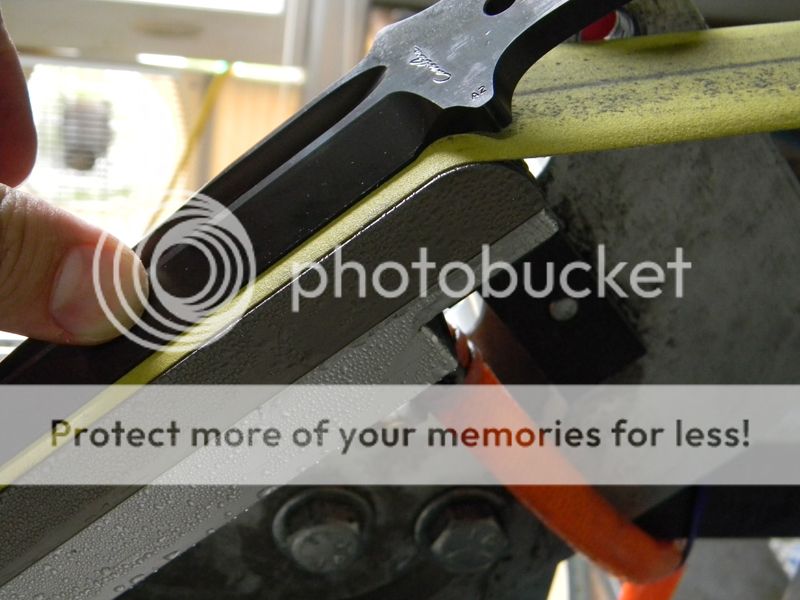Okay, this is the last post of this WIP, finishing the blades post HT:
Despite all the fine finishing I've attempted to do on the machine there were some blades that had flaws that need to be ground out. And although the side milled bevels turned out pretty good, they're not as slick as a ground finish. So, once the blades returned from Peters I pulled the best and put them into the vibratory finisher for field grade, as machined, but the rest are receiving some kind of grinding.
The nature of these flaws is difficult to photograph but this picture shows it well:
I'm taking an unusual approach to this. I'm grinding them lengthwise against a flat platen with an end radius shaped to match the plunge radius. This kind of platen is something I have offered here for sale, so this would be a shameless plug except I don't have any more of them and I don't have plans to make more any time real soon.
This is something you can make yourself with a grinder, file and radius gauge.
The benefit to this for finish grinding is a perfect clean plunge and a very straight forward simple grinding technique that leads to a nice surface finish and nice straight flat geometry. Finishing grinding something I've ground the regular way is an eye opener because this finds and fixes all kinds of flaws.
This is what my setup looks like:
You'll notice it is dripping with condensation. It was a humid rainy day and I shut my grinding area off from the rest of my shop when I have a lot of grinding to do and ventilate it with outside air. So all that humid North Carolina spring time air condenses on my ice cold platen (another shameless plug). I'm keeping my platen cold by circulating ice water through an aluminum chiller. This is necessary when grinding with the top wheel removed because all the heat from the friction, but an advantage to it is you don't need to lift as much.
To use this technique you need to make contact out on the belly of the blade first, edge first. Then lay the blade flat. Then work down to the plunge. Don't let the part of the belt traveling over the radius make hard contact anywhere on the blade unless you're actively grinding your plunge. But, when you're actively grinding your plunge you need to press it in firmly and keep hold of it so you don't spoil your plunge.
I made a video to illustrate the technique.
[video=youtube_share;qSMJhAj3-gY]http://youtu.be/qSMJhAj3-gY[/video]
I got the hang of it in five or ten blades. It is not difficult to do, but it is important to practice a few times before attempting it on real work.
This is a picture of that same blade immediately after the video. The blade has been heat treated, so the contrast with the heat colors and ground area really illustrate the imperfections that are being ground out.
Here is one that has been tumbled to remove the color from the fuller and then finish ground to 300 grit
Pretty slick technique huh?
And here you go:
Thanks for following along.






